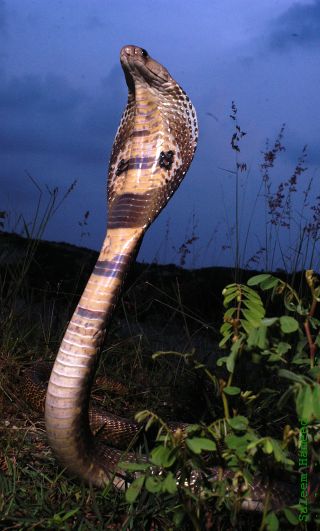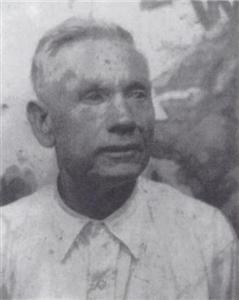Pentecostalism or classical Pentecostalism is a Protestant Charismatic Christian movement that emphasizes direct personal experience of God through baptism with the Holy Spirit. The term Pentecostal is derived from Pentecost, an event that commemorates the descent of the Holy Spirit upon the Apostles and other followers of Jesus Christ while they were in Jerusalem celebrating the Feast of Weeks, as described in the Acts of the Apostles.
Church of God is a name used by numerous denominational bodies. The largest denomination with this name is the Church of God.

Charles Edward Blake Sr. is an American minister and retired pastor who served as the Presiding Bishop and leader of the Church of God in Christ, a 6 million-member Holiness Pentecostal denomination, that has now grown to become one of the largest predominantly African American Pentecostal denominations in the United States, from 2007 to 2021. On March 21, 2007, he became the Presiding Bishop of the Church of God in Christ, Inc., as a result of Presiding Bishop Gilbert E. Patterson's death. In a November 2007 special election, he was elected to complete the unexpired term of his predecessor as Presiding Bishop. In November 2008, Bishop Blake was re-elected to serve a four-year term as Presiding Bishop. In November 2012, Bishop Blake was re-elected again to serve a four-year term as the Presiding Bishop. He was reelected to a third term as Presiding Bishop on November 15, 2016. On October 23, 2020, Bishop Blake announced that he would not seek a re-election as Presiding Bishop nor as a member of the General Board and that he would retire from the Office of Presiding Bishop and from the General Board in 2021. He officially retired on March 19, 2021, and was succeeded by Bishop J. Drew Sheard, Sr. as Presiding Bishop on March 20, 2021.
The Azusa Street Revival was a historic series of revival meetings that took place in Los Angeles, California. It was led by William J. Seymour, an African-American preacher. The revival began on April 9, 1906, and continued until roughly 1915.
The Church of God, Mountain Assembly (CGMA) is a holiness Pentecostal Christian body formed in 1907, with roots in the late 19th-century American holiness movement and early 20th-century Pentecostal revival. The denomination maintains headquarters in Jellico, Tennessee and is a member of the Pentecostal/Charismatic Churches of North America.

The International Pentecostal Holiness Church (IPHC) or simply Pentecostal Holiness Church (PHC) is an international Holiness-Pentecostal Christian denomination founded in 1911 with the merger of two older denominations. Historically centered in the Southeastern United States, particularly the Carolinas and Georgia, the Pentecostal Holiness Church now has an international presence. In 2000, the church reported a worldwide membership of over one million—over three million including affiliates.

Rattlesnakes are venomous snakes that form the genera Crotalus and Sistrurus of the subfamily Crotalinae. All rattlesnakes are vipers. Rattlesnakes are predators that live in a wide array of habitats, hunting small animals such as birds and rodents.

A snakebite is an injury caused by the bite of a snake, especially a venomous snake. A common sign of a bite from a venomous snake is the presence of two puncture wounds from the animal's fangs. Sometimes venom injection from the bite may occur. This may result in redness, swelling, and severe pain at the area, which may take up to an hour to appear. Vomiting, blurred vision, tingling of the limbs, and sweating may result. Most bites are on the hands, arms, or legs. Fear following a bite is common with symptoms of a racing heart and feeling faint. The venom may cause bleeding, kidney failure, a severe allergic reaction, tissue death around the bite, or breathing problems. Bites may result in the loss of a limb or other chronic problems or even death.

William Joseph Seymour was an African-American holiness preacher who initiated the Azusa Street Revival, an influential event in the rise of the Pentecostal and Charismatic movements. He was the second of eight children born to emancipated slaves and raised Catholic in extreme poverty in Louisiana.
Christian perfection is the name given to the process or the event of achieving spiritual maturity or perfection; it is a theological concept that exists within many denominations of Christianity. The ultimate goal of this process is union with God characterized by pure love of God and other people as well as personal holiness or sanctification. Other terms used for this or similar concepts include entire sanctification, perfect love, the baptism with the Holy Spirit, the indwelling of the Holy Spirit, baptism by fire, the second blessing, and the second work of grace.

The Indian cobra, also known commonly as the spectacled cobra, Asian cobra, or binocellate cobra, is a species of cobra, a venomous snake in the family Elapidae. The species is native to the Indian subcontinent, and is a member of the "big four" species that are responsible for the most snakebite cases in India.
Holy Ghost People is a 1967 documentary directed and narrated by Peter Adair. It is about the service of a Pentecostal community in Scrabble Creek, West Virginia, United States. The church service includes faith healing, snake handling, speaking in tongues and singing. This documentary has entered the public domain and is available at the Internet Archive.

The Apostolic Faith Mission of South Africa (AFM) is a classical Pentecostal Christian denomination in South Africa. With 1.2 million adherents, it is South Africa's largest Pentecostal church and the fifth largest religious grouping in South Africa representing 7.6 percent of the population. Dr. Isak Burger has led the AFM as president since 1996 when the white and black branches of the church were united. It is a member of the Apostolic Faith Mission International, a fellowship of 23 AFM national churches. It is also a member of the South African Council of Churches.

George Went Hensley was an American Pentecostal minister best known for popularizing the practice of snake handling. A native of rural Appalachia, Hensley experienced a religious conversion around 1910: on the basis of his interpretation of scripture, he came to believe that the New Testament commanded all Christians to handle venomous snakes.
"Brother" Claude Ely was an American Appalachian religious singer-songwriter and a Pentecostal Holiness preacher.
Pentecostalism is a renewal movement within Protestant Christianity that places special emphasis on a direct personal relationship with God and experience of God through the baptism with the Holy Spirit. For Christians, this event commemorates the descent of the Holy Spirit upon the followers of Jesus Christ, as described in the second chapter of the Book of Acts. Pentecostalism was established in Kerala, India at the start of the 20th century.
Gregory James Coots was a Pentecostal pastor in Kentucky who was featured in the National Geographic Channel reality television show Snake Salvation, which documented the lives of people who practice snake handling. He died from a rattlesnake bite during a service.

The Swedish Pentecostal Movement is a Pentecostal movement in Sweden. Many, but not all, of these, are members of the Pentecostal Alliance of Independent Churches, which was founded in 2001. The Pentecostal movement spread to Sweden by 1907 from the 1904–1905 Welsh Revival and the Azusa Street Revival in Los Angeles in 1906.
Alfred Gaelton Garr was an early leader in the Pentecostal movement. Hundreds of churches were born out of his ministry, and he was a pioneer in the healing ministry of Pentecostalism as a whole, leading hundreds of healings during his lifetime. He became a leader in the Burning Bush movement before attending the Azusa Street Revival and subsequently devoting the rest of his life to healing evangelism and planting Pentecostal churches in the nation and across the globe.










